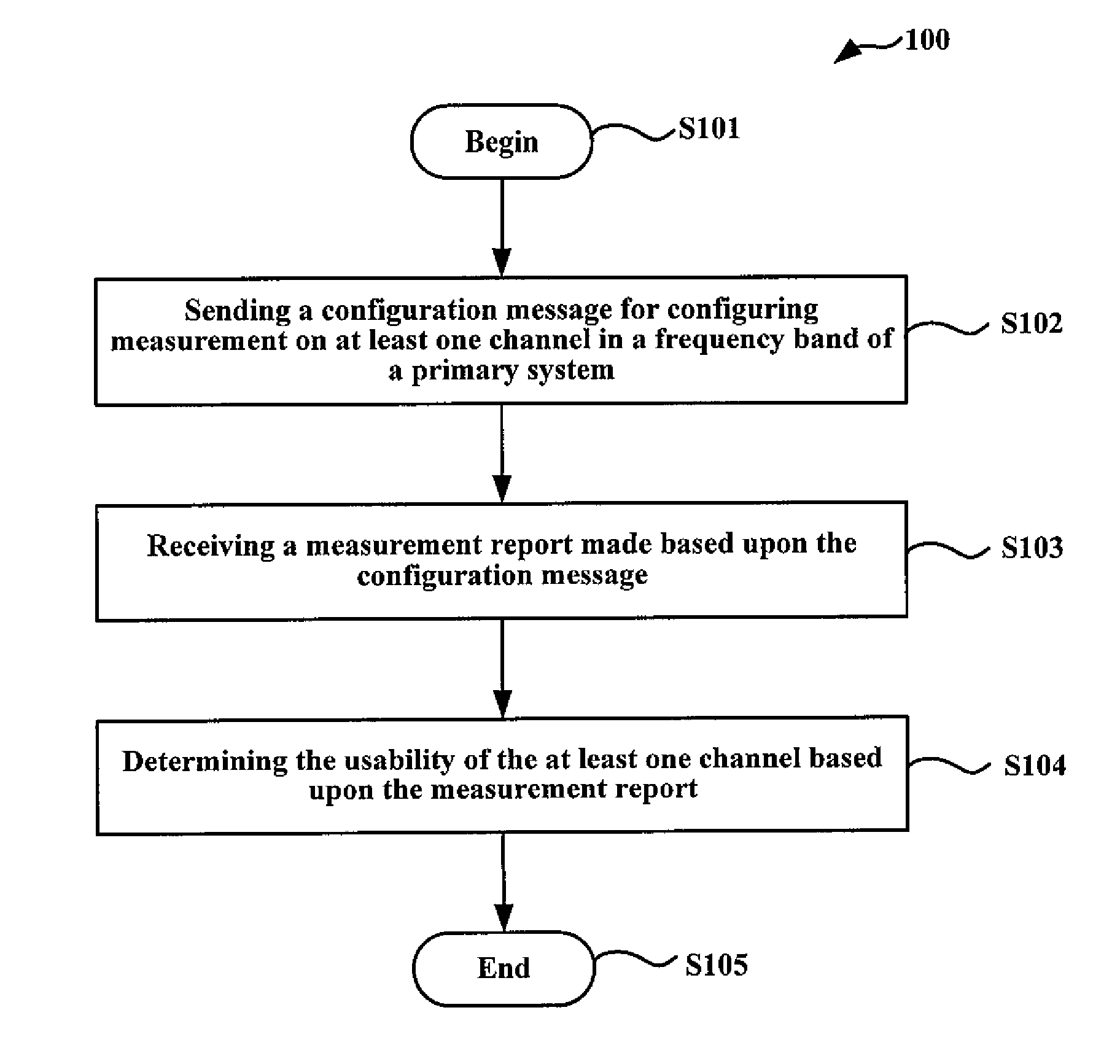Methods, apparatuses, and computer program products for out-of-band sensing in a cognitive LTE system
- Summary
- Abstract
- Description
- Claims
- Application Information
AI Technical Summary
Benefits of technology
Problems solved by technology
Method used
Image
Examples
example 1
Signal Feature Detection of a Primary System
[0109]If the sensed unlicensed band is a TV band, the primary signals could be ATSC (North America), DTV-B (Europe), or ISDB (Japan) signals. Here how the UE performs the feature detection for an ATSC signal will be exemplarily discussed as below.
[0110]The ATSC signal has a number of features, such as PN sequence, pilot, segment-synch characteristic, and cyclostationarity property and so on. As specified in 802.22 standards, a pilot detection method is suggested for TV signals detection.
[0111]The ATSC signal uses a 8-VSB modulation with signal levels (−7, −5, −3, −1, 1, 3, 5, 7). A DC offset of 1.25 is added to this at baseband to effectively create a small pilot signal to enable carrier recovery at the receiver. Upon completion of the digital transition, there will be only two possible pilot frequencies: 309440.6 Hz and 328843.6 Hz. The difference between these two pilot frequencies is approximately 19.4 kHz.
[0112]For UE end that performs...
example 2
Signal Feature Detection of a Secondary System
[0114]In secondary system coexistence scenario on an unlicensed band, there may be multiple potential secondary systems, such as WLAN, Bluetooth or other cellular systems. The set of possible systems and their transmission parameters might be obtained as prior knowledge to assist cognitive devices in performing feature detection. These parameters include bandwidths, modulation types, duplexing, and multiple accessing methods and so on. For examples, CDMA systems have dedicated spreading codes for pilot and synchronization channels and OFDM packets have preambles for packet acquisition. Different types of modulated signals (such as BPSK, QPSK, and SQPSK) that have identical PSD functions may have highly distinct spectral correlation functions. Furthermore, stationary noise and interference exhibit no spectral correlation. These signatures can be used to detect secondary systems on the sensed unlicensed band.
[0115]If the possible secondary...
PUM
 Login to View More
Login to View More Abstract
Description
Claims
Application Information
 Login to View More
Login to View More - R&D
- Intellectual Property
- Life Sciences
- Materials
- Tech Scout
- Unparalleled Data Quality
- Higher Quality Content
- 60% Fewer Hallucinations
Browse by: Latest US Patents, China's latest patents, Technical Efficacy Thesaurus, Application Domain, Technology Topic, Popular Technical Reports.
© 2025 PatSnap. All rights reserved.Legal|Privacy policy|Modern Slavery Act Transparency Statement|Sitemap|About US| Contact US: help@patsnap.com



